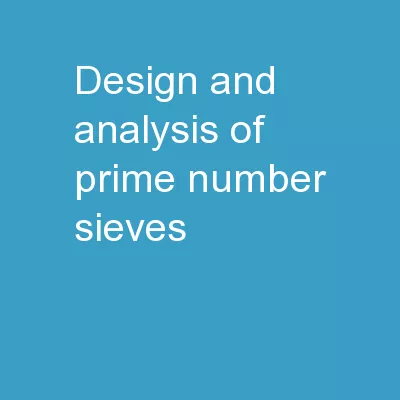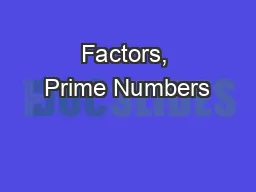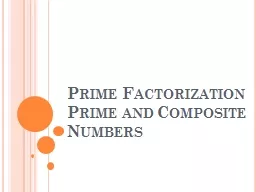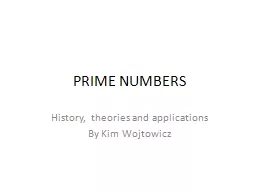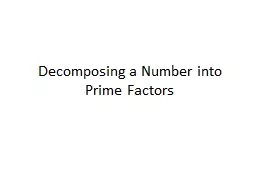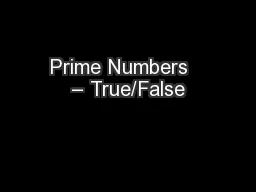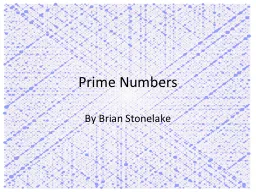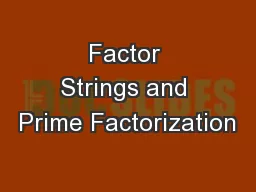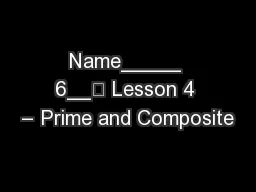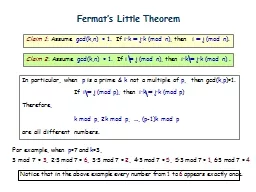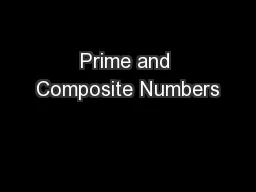PPT-Design and Analysis of Prime Number Sieves
Author : faustina-dinatale | Published Date : 2018-12-20
Seth Futrell Matthew Ritchie Dakota Perryman Mark Thompson Tags Tots Background History Prime numbers have fascinated the human race for millennia with solutions
Presentation Embed Code
Download Presentation
Download Presentation The PPT/PDF document "Design and Analysis of Prime Number Siev..." is the property of its rightful owner. Permission is granted to download and print the materials on this website for personal, non-commercial use only, and to display it on your personal computer provided you do not modify the materials and that you retain all copyright notices contained in the materials. By downloading content from our website, you accept the terms of this agreement.
Design and Analysis of Prime Number Sieves: Transcript
Download Rules Of Document
"Design and Analysis of Prime Number Sieves"The content belongs to its owner. You may download and print it for personal use, without modification, and keep all copyright notices. By downloading, you agree to these terms.
Related Documents

